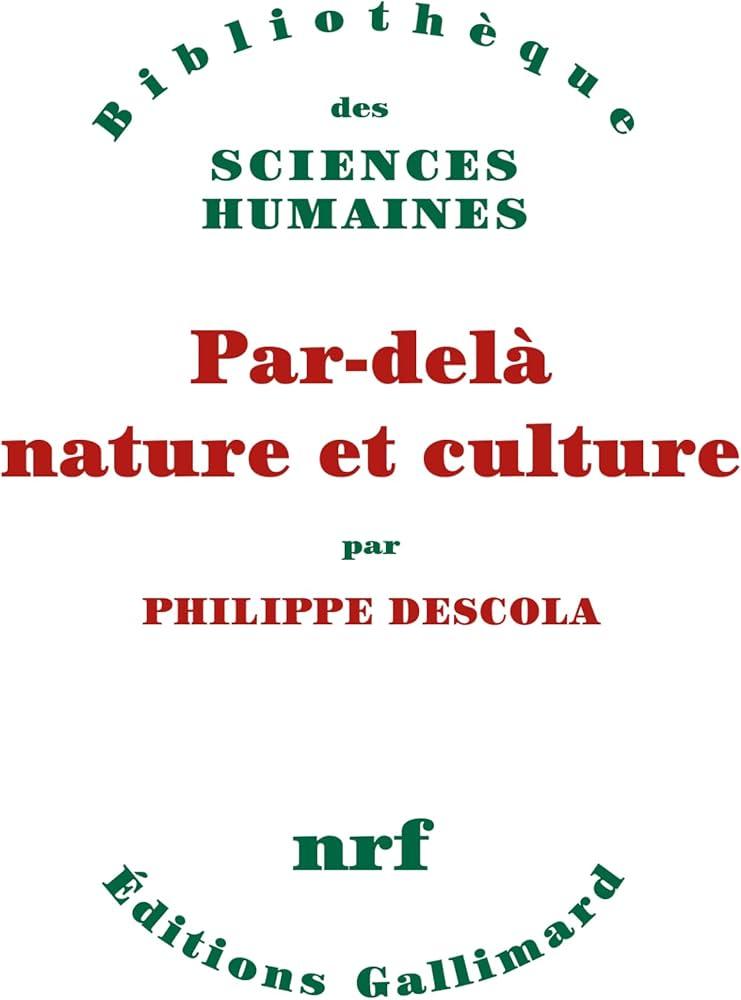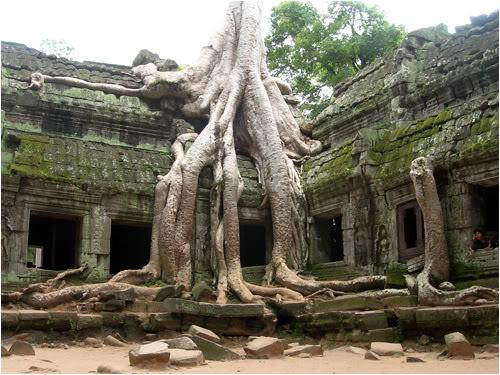In the tapestry of existence, two threads are woven intricately together: the vibrant hues of nature and the rich patterns of culture. From the rustle of leaves in ancient forests to the rhythmic beats of drums in celebration, the connection between the natural world and human expression is profound and multifaceted. This intricate dance informs our identities, shapes our traditions, and influences our perspectives. As we venture into the realm of “Interwoven Worlds,” we delve into the symbiotic relationship that binds humanity to its surroundings. We will explore how landscapes, flora, and fauna inspire art, folklore, and rituals across cultures, revealing a dialogue that transcends borders and time. Join us on this journey as we uncover the myriad ways in which nature and culture coalesce, revealing that, indeed, we are all part of a larger, interconnected cosmos.
Table of Contents
- The Symphony of Nature and Culture: Understanding Their Interconnection
- Cultural Expressions Inspired by the Natural World
- Sustainable Practices: Bridging Eco-Consciousness with Cultural Heritage
- Preserving Traditions: Fostering Respect for Nature through Community Engagement
- In Retrospect
The Symphony of Nature and Culture: Understanding Their Interconnection

The intricate relationship between the natural world and human culture is a fascinating tapestry woven from the threads of history, tradition, and the environment. Throughout time, various societies have drawn inspiration from their surroundings, shaping artistic expressions, rituals, and ways of life that reflect the profound influences of nature. From the vibrant colors of indigenous art to the delicate patterns found in folk music, the elements of the earth find their resonance in cultural practices. This symbiosis can be seen in:
- Folklore and Myths: Narratives that celebrate natural phenomena.
- Architectural Styles: Buildings designed to harmonize with landscapes.
- Culinary Arts: Recipes that highlight local ingredients and seasons.
Moreover, the preservation of biodiversity plays a pivotal role in sustaining cultural heritage. Many communities possess an intrinsic knowledge of their local ecosystems, which enables them to thrive in harmony with nature. This understanding is often encapsulated in practices such as sustainable agriculture and traditional medicine. As globalization accelerates, the challenge becomes ensuring that these practices are maintained, allowing the rich legacy of both nature and culture to flourish. A closer examination reveals the richness of this interdependence, as shown in the following table:
| Natural Element | Cultural Representation |
|---|---|
| Forests | Folktales about spirits living among the trees |
| Rivers | Ceremonies honoring water as a source of life |
| Fruits | Festivals celebrating harvest and abundance |
Cultural Expressions Inspired by the Natural World

The intricate relationship between nature and culture manifests in myriad ways, reflecting the deep-seated connections humans share with their environment. From ancient rituals to contemporary art, cultural expressions draw inspiration from the natural world, fostering a sense of identity and belonging. Traditional practices, such as goddess worship or seasonal festivals, often celebrate elements like the changing seasons, agricultural cycles, and celestial phenomena. These observances not only honor the earth but also serve as a conduit for community bonding, where stories and traditions are passed down through generations.
Artistic forms also dance to the rhythm of nature, with landscapes morphing into vibrant canvases and music echoing the sounds of wild places. The following elements showcase how nature inspires creativity across cultures:
- Visual Arts – Paintings, sculptures, and carvings often depict wildlife and natural landscapes, invoking emotions and appreciation for the beauty of the Earth.
- Literature – Poetry and prose frequently explore themes of nature, illustrating the deep emotional ties between humans and their surroundings.
- Traditional Crafts – Techniques such as weaving and pottery often incorporate natural materials and motifs, revealing the reliance on nature for artistic expression.
Sustainable Practices: Bridging Eco-Consciousness with Cultural Heritage
In a world where industrialization often overshadows tradition, sustainable practices provide a pathway to reconnect humans with their cultural roots. Eco-consciousness encourages communities to honor the delicate balance between nature and tradition. Many indigenous communities exemplify this synergy by embedding biodiversity within their cultural narratives. This bond can manifest through various forms, such as:
- Traditional Farming Techniques: Utilizing crop rotation and organic pest control to enrich the land.
- Craftsmanship: Employing locally sourced materials to create art and tools that reflect their heritage.
- Storytelling: Sharing ancestral wisdom about environmentally sustainable practices that have been passed down through generations.
Moreover, cultural heritage sites can become hubs of sustainability by promoting green practices that protect both the environment and cultural identity. By integrating eco-friendly initiatives into tourism and local events, regions can draw attention to their historical significance while advocating for environmental stewardship. Consider the following approaches that can strengthen this connection:
| Approach | Impact |
|---|---|
| Cultural Festivals | Showcase sustainable local products, raising awareness. |
| Heritage Conservation | Preserve sites using eco-friendly materials and methods. |
| Community Workshops | Teach traditional skills that promote sustainable living. |
Preserving Traditions: Fostering Respect for Nature through Community Engagement
In every culture, there exists a tapestry woven with the threads of traditions that honor the symbiotic relationship between humans and the natural world. Community engagement plays a pivotal role in reinforcing this bond, allowing groups to come together and share wisdom, practices, and rituals that celebrate nature. Through storytelling circles, local festivals, and environmental stewardship programs, communities can cultivate a deeper awareness of their ecological surroundings. By fostering respect for nature, these traditions help instill values of sustainability and conservation in younger generations. The grassroots efforts to reconnect individuals with their ancestral practices not only promote biodiversity but also enhance cultural identities, grounding people in their heritage while advocating for the protection of their environment.
Moreover, the benefits of intertwining cultural traditions with environmental awareness can manifest in various forms. Collaborative initiatives, such as community gardens or nature clean-up events, emphasize the importance of taking care of the planet while preserving cultural practices related to land use and agriculture. These activities can lead to a greater appreciation for indigenous knowledge and holistic approaches to sustainability. To visualize these efforts, consider the following table that outlines some significant cultural practices that contribute to environmental stewardship:
| Culture | Tradition | Environmental Benefit |
|---|---|---|
| Native American | Controlled burns | Prevents wildfires, promotes biodiversity |
| African | Agroforestry systems | Improves soil health, enhances food security |
| Japanese | Shinrin-yoku (forest bathing) | Encourages mental well-being and conservation |
Integrating cultural traditions with environmental responsibility paves the way for communities to become stewards of their local ecosystems. By embracing and adapting these practices, people can cultivate a shared sense of purpose and belonging, reinforcing the notion that our well-being is intricately linked with the health of the earth. Ultimately, as communities come together to celebrate and preserve their traditions, they foster an enduring respect for nature that transcends generations, ensuring that the wisdom of the past nurtures the future.
In Retrospect
As we draw the curtains on our exploration of “,” it becomes clear that the threads connecting these two realms are intricately spun into the fabric of our existence. From the vibrant hues of indigenous arts to the sacred rhythms of traditional rituals, nature remains an ever-present muse and teacher. It shapes our stories, influences our beliefs, and grounds our identity within the tapestry of life.
In this dance between culture and ecology, we find a profound reminder of our shared responsibility to cherish and protect the natural world that inspires us. As we navigate the challenges of a rapidly changing planet, let us hold dear the symbiotic relationship that has fostered human creativity and resilience for millennia. May our journey not only illuminate the pathways of the past but also inspire future generations to weave their narratives into the enduring story of humanity and nature – a story that, when told together, becomes a powerful testament to the beauty of coexistence.
the interwoven worlds of nature and culture invite us to reflect, celebrate, and act, fostering a greater appreciation for the intricate web of life that unites us all. Let us step forward with mindful intention, embracing the harmonious connection that binds the earth beneath our feet to the dreams that soar above.



